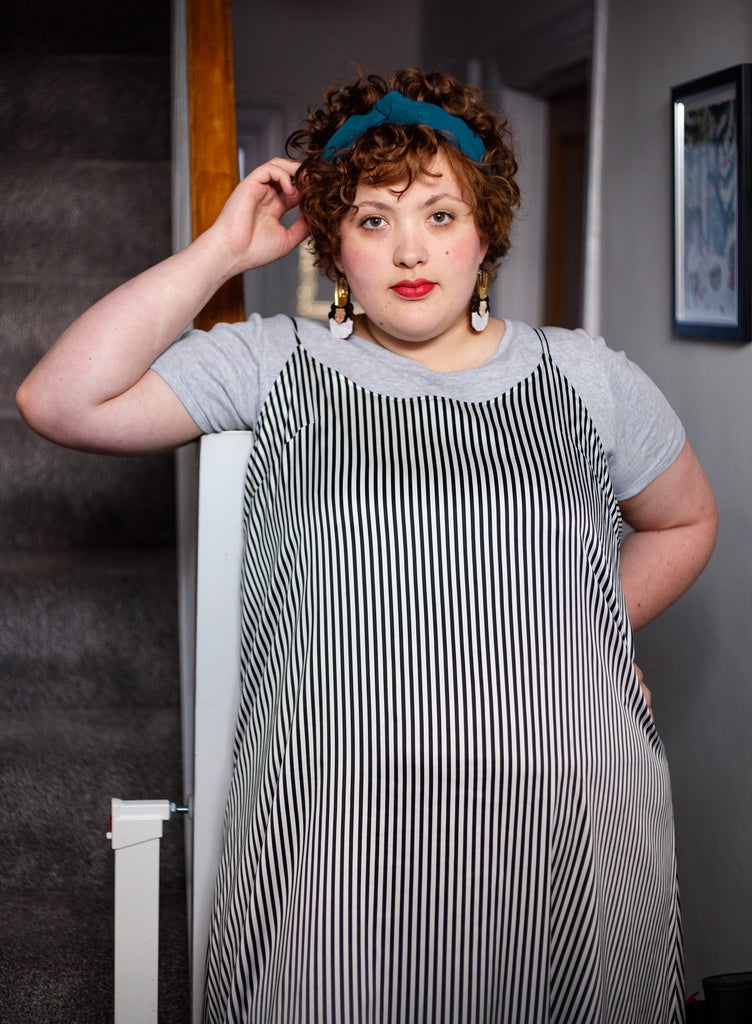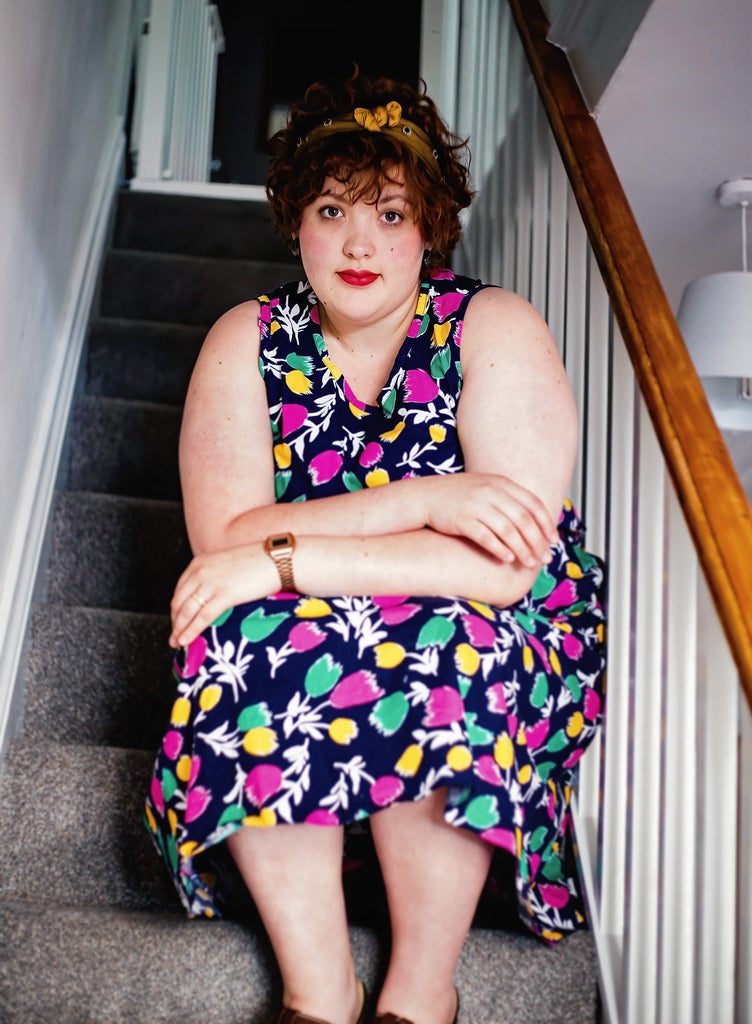After discovering the worlds of plus-size fashion blogging and fat liberation advocacy in 2012, I began taking steps to reclaim my own fat body, one of which was changing up my wardrobe. Sartorially, my teens and early 20s were characterised by shapeless dresses, dark colours, A-line silhouettes and anything oversized enough to ‘hide’ my lumps, bumps and supposed imperfections. I believed, for a long time, that being fat was one of the worst things a person could be (a lesson most of us begin consuming from the time we are children). I thought no one should have to bear the sight of my figure, the nuances of my soft flesh.
Growing up, countless articles in mainstream women’s magazines and television programmes like What Not To Wear taught me that flowing garments would ‘diminish’ the size of my body for a ‘flattering’ end result. The few ‘husky’ sections of the department stores in my local area echoed those sentiments. They were dreary, hidden corners of otherwise large shops where tunic tops and tent dresses abounded. Even if I had wanted to rock anything form-fitting, plus-size options were so limited at the time that I don’t believe I could have.
As I learned more about diet culture, body image and fat politics, while consuming imagery of unapologetic fat babes on the internet, I learned about other places I could buy clothes. I was introduced to independent plus-size designers: the people listening to plus-size consumers when no one else would. I observed the radicalness of wearing the styles fat women are so regularly told are not for us. I watched as others decorated their visible belly outlines (VBOs) in faux leather mini skirts, skintight jumpsuits, pencil dresses and skinny jeans, and slowly grew more comfortable celebrating my own body in these ways.
It was liberating, to say the least. I had never before felt fabric cling to my lower belly, my large thighs, my ‘bingo wings’, my big bum or my love handles. I’d never treated any part of my figure like something to care for or show empathy towards, let alone something to celebrate. For years thereafter, I purchased predominantly body-hugging styles and delighted in feeling like I was displaying my figure proudly despite all the messaging which insisted I should hide. Tight clothing helped me become more comfortable with the sight of my body and in the moments when the sight of my body in tight clothing made others uncomfortable, I felt a little twinge of satisfaction. After all, people should have to confront their own internalised fatphobia and fat people should be allowed to wear whatever they so please.

All of this holds true today. Recently, however, I have found myself eyeing up ‘shapeless’ styles again. In the summer heat, I’ve craved the airiness of a garment that doesn’t cling to my body at all. I’ve missed the ease of throwing on something baggy first thing in the morning when I’m getting two small children – as well as myself – ready. I started wondering what it would feel like to wear something big and loose, now that I have put in so much work to cultivate self-worth. What might it be like to spin around in a tent dress? What might it be like to take up even more space in something so big and flowing?
After buying myself a few baggy dresses and quickly realising how comfortable and effortless to style they are, I began to understand that the issue with such looks was never the looks themselves. The issue was that ‘shapeless’ styles were believed to be the only things fat women ‘should’ wear. For years they felt like the only styles anyone was making for us. When we compare this to a straight-size market that has long been oversaturated with variety, the fact that we only seemed to have one primary look available to us sent a clear message: fat women weren’t worthy of anything else. Fat women deserve only the styles and colours that might make us look ‘less fat’. Or – because no item of clothing can really make someone fat look thin – styles that were simply discreet. ‘Modest’. We must be modest, of course. We must make amends for being so grotesque.
It’s true that in shapeless dresses, the particulars of my fat body are not as visible as they might be in something form-fitting. Still, there is some boldness to be garnered from them. In these looser styles I feel as though I take up more physical space. I am a big woman in a big dress, allowing myself to live comfortably in that bigness in a culture that would rather see me shrink. Ultimately, the experience of wearing shapeless garments as a 29-year-old who believes in fat liberation is indescribably different from the experience of wearing shapeless garments as a 19-year-old who wanted nothing more than to disappear.

It’s also felt like a way to combat the messaging that fat women must present as hyperfeminine as possible, whenever possible. I’ve long questioned whether my love of pin-up aesthetics, makeup and pencil dresses is genuine or whether I’ve developed this taste as a way to ‘make up for’ my body. The simple reality is that fat women often feel better treated by the masses when we ‘make an effort’. When we doll ourselves up to the nines, we are seen as ‘trying’ in other categories outside our weight. We are told things like “At least you have a beautiful face” or “At least you dress well”. We become more palatable.
Pushed to introspection, I genuinely believe that I enjoy playing around with makeup. I love feeling like I’ve stepped out of a glamorous old film set. I like spending some of my limited ‘me time’ decorating my body: showing my fatness that it’s worthy of pampering. I don’t want to do this all the time, though, and I equally resent the idea that I should always have to.
Sometimes I just want to wear a sack and little to no makeup. I want to feel just as wonderful in a shapeless ensemble as I would if I were more elaborately dressed up. I want to feel just as comfortable in my body and just as worthy of respect. I want to be treated with as much kindness as I would be if I were rocking a pencil skirt and red lipstick, too.
Like what you see? How about some more R29 goodness, right here?
Making Clothes As A Plus-Size Person Is Radical